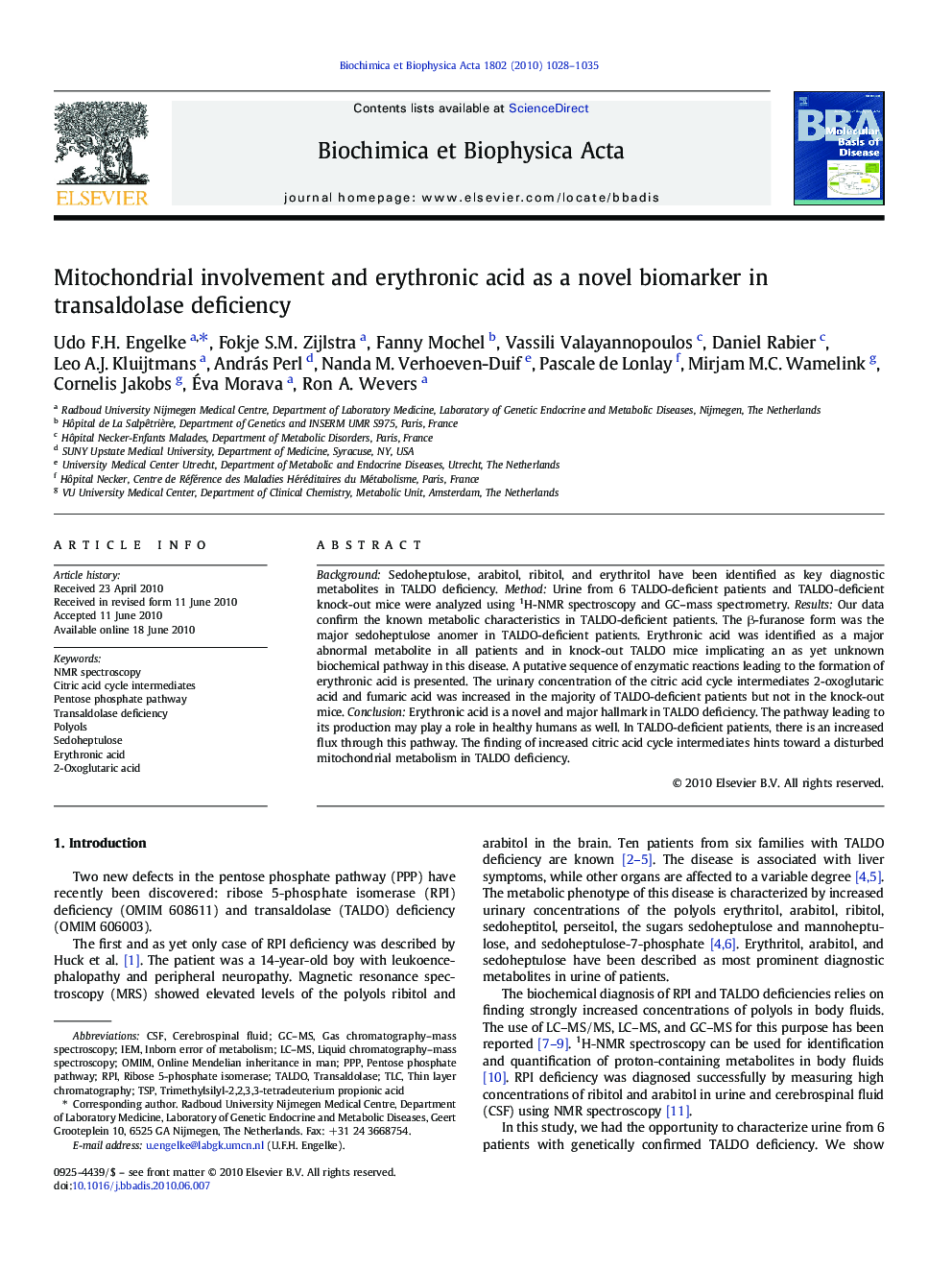| Article ID | Journal | Published Year | Pages | File Type |
|---|---|---|---|---|
| 1905321 | Biochimica et Biophysica Acta (BBA) - Molecular Basis of Disease | 2010 | 8 Pages |
BackgroundSedoheptulose, arabitol, ribitol, and erythritol have been identified as key diagnostic metabolites in TALDO deficiency.MethodUrine from 6 TALDO-deficient patients and TALDO-deficient knock-out mice were analyzed using 1H-NMR spectroscopy and GC–mass spectrometry.ResultsOur data confirm the known metabolic characteristics in TALDO-deficient patients. The β-furanose form was the major sedoheptulose anomer in TALDO-deficient patients. Erythronic acid was identified as a major abnormal metabolite in all patients and in knock-out TALDO mice implicating an as yet unknown biochemical pathway in this disease. A putative sequence of enzymatic reactions leading to the formation of erythronic acid is presented. The urinary concentration of the citric acid cycle intermediates 2-oxoglutaric acid and fumaric acid was increased in the majority of TALDO-deficient patients but not in the knock-out mice.ConclusionErythronic acid is a novel and major hallmark in TALDO deficiency. The pathway leading to its production may play a role in healthy humans as well. In TALDO-deficient patients, there is an increased flux through this pathway. The finding of increased citric acid cycle intermediates hints toward a disturbed mitochondrial metabolism in TALDO deficiency.
Research Highlights► Urine 1H-NMR Spectroscopy can be used to diagnose patients with TALDO-deficiency ► Erythronic acid is a novel and major hallmark in TALDO-deficiency ► Increased citric acid cycle intermediates hints towards a disturbed mitochondrial metabolism in TALDO-deficiency.
